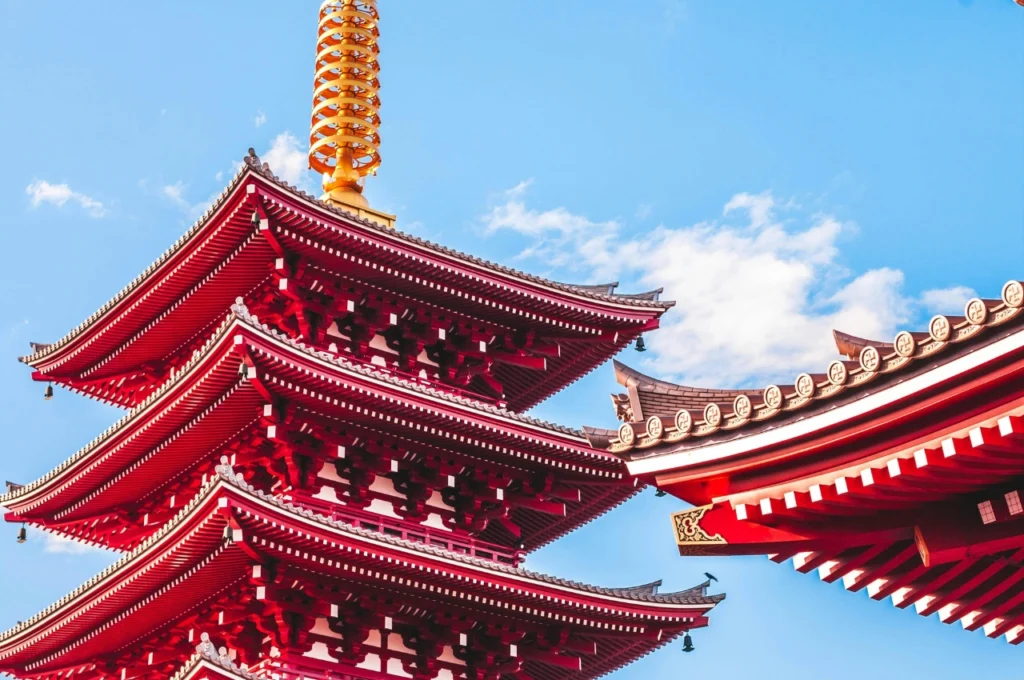Planning to visit Japan? This island nation off the east coast of the Asian mainland is a dream destination for so many Australians. It offers everything from the neon buzz of Tokyo to the tranquil beauty of Kyoto’s temples. But before you pack your bags, it’s important to ask yourself: do I need travel insurance for Japan?
While Japan is an incredibly safe destination, unexpected events can still happen, from lost baggage to a medical emergency. In this guide, we’ll walk you through the reasons why japan travel insurance is key.
Understanding Travel Insurance
Travel insurance acts as a safety net for your Japan holiday. It provides cover for a range of unexpected situations that could pop up before or during your travels. For Aussies heading abroad, having travel insurance means you’re protected from eligible unforeseen expenses that could arise. This can range from a cancelled trip, a medical emergency, lost baggage, or any other covered event. Insurance provides peace of mind so you can fully enjoy your adventure without being plagued by the what-ifs.
Travel insurance, like our international single trip plan, provides cover for one holiday that lasts up to 12 months. You can purchase single-trip cover if you are visiting other destinations in addition to Japan. Just make sure you add all planned destinations to your travel insurance policy during purchase.
Some travel insurance plans will allow you to add and remove specific covers in order to modify your plan how you want it. Plans like ours feature a range of cover packages that you can keep or remove from your plan to ensure it stays within your budget, but also to ensure you get the cover you want.
Why Travel Insurance Is Important
Travel insurance is your ultimate travel sidekick ready to swoop in and save the day when things go awry, whether it’s a lost bag or an unexpected illness. Without travel insurance, you could be solely responsible for high out of pocket costs for medical emergencies and unforeseen circumstances–without the chance of reimbursement upon your return to Australia.
Could you afford to pay thousands of dollars for a necessary medical evacuation, or replace all the essential items in your suitcase if your airline loses your luggage? If you don’t want to take that chance, secure your holiday with Japan travel insurance.
What Travel Insurance Covers
Different policies and providers offer different benefits and cover amounts. Be sure to review the product disclosure statement (PDS) for any plan you’re considering. In the meantime, here are some essential types of cover to look for when preparing to visit Japan:
- Medical Emergencies: The plan you choose should provide cover for hospital expenses resulting from unexpected injury or illness, like if you break your ankle mountain climbing in Nagano or you come down with a severe case of food poisoning in Osaka.
- Trip Cancellations and Interruptions: If you need to cancel your trip or fly home early due to a covered reason, like the death of a family member or severe weather that grounds your flight, your insurance can reimburse prepaid, nonrefundable trip expenses (flights, accommodations, booked activities, etc.).
- Lost or Stolen Luggage or Personal Belongings: There’s always a chance your airline or cruise line could lose or damage your baggage. Travel is also frequently accompanied by risk of theft. In a situation where your luggage or personal effects are accidentally lost, stolen, or damaged, travel insurance can provide reimbursement for the replacement of these items.
- Personal Liability: This type of cover can help shield you from unexpected costs if you accidentally damage property or hurt someone while travelling.
- 24/7 Customer Helpline: Be sure to look for a plan with 24/7 emergency assistance in case you lose your passport, need help seeking medical treatment, or face any other emergency during your trip–because travel complications don’t follow standard work hours!
Not fully convinced you need travel insurance for visiting Japan? Even the Australian government urges Aussies to purchase comprehensive travel insurance before they leave for Japan. “Your policy needs to cover all overseas medical costs, including medical evacuation,” shares Smartraveller. “The Australian government won’t pay for these costs.”
Common Risks When Travelling to Japan
Health Risks and Medical Facilities
Health risks for travellers to Japan include radiation risks, measles, rubella, and insect-borne diseases like Japanese encephalitis. To combat these risks, Smartraveller recommends avoiding restricted zones that could have high levels of radiation. Make sure you are using insect repellent, and ensuring your vaccinations are up to date prior to travel.
Fortunately, medical facilities in Japan are top-notch, with clean, modern facilities and highly trained doctors. Many hospitals have English-speaking staff, especially in most major cities. Whether you need a quick consultation or more serious treatment, you’ll find the healthcare system to be efficient and reliable.
However, hospital expenses can be costly, and you may need to pay upfront for treatment. The Australian Embassy in Tokyo shares that “the Australian government won’t pay for your medical treatment overseas or medical evacuation to Australia or a third country.” That’s why it’s so vital to purchase travel insurance for Japan that covers unexpected medical expenses and medical repatriation.
Natural Disasters and Emergency Situations
Japan is prone to natural disasters and severe weather. These include volcanic eruptions (the nation has 110 active volcanoes), earthquakes, tsunamis, and typhoons. Weather conditions can change suddenly, especially in winter, when heavy snowfalls, extremely low temperatures, and avalanches are common. Missile launch activity from North Korea is also an ongoing threat.
There are several ways for Australian travellers to prepare for potential emergency situations in Japan. Smartraveller recommends that you:
- Travel with a basic emergency supply kit.
- Keep your passport and travel documents secure in a waterproof place.
- Follow the advice of local authorities.
- Keep track of local media updates.
- Immediately evacuate if necessary.
Be sure to review the Japan National Tourism Organization’s safety tips for visitors to Japan. Also, download Japanese public broadcaster NHK’s free smartphone app to receive notifications regarding natural disasters and missile warnings in English.
Theft and Personal Safety Concerns
Japan has a low crime rate and most tourists are able to avoid falling victim to serious crimes. However, petty theft does occur. Bars and nightclubs in major cities can be grounds for overcharging, credit card fraud, drink spiking, illegal drugs, assault, and forced cash withdrawals at ATMs.
Here are some tips for Aussies looking to avoid theft and stay safe while travelling Japan:
- Never leave your drink unattended and do not accept drinks from strangers.
- Don’t take large amounts of cash to parties or entertainment districts.
- Keep valuables like passports, cash, and cards close to your body and out of sight.
- Exercise caution in crowded places and avoid distractions.
Specific Considerations for Japan
One vital legal difference to be aware of between Australia and Japan is that the island nation has strict rules governing the importation of medication. Depending on the classification of your medicine, you may need to apply for permission to take it into Japan.
Some medicines, including pseudoephedrine (found in some cold and flu tablets), are banned in Japan, and you may be detained if these medications are discovered in your luggage. See further details about bringing medicine into Japan here.
It’s also important to be mindful when posting on social channels, as travellers have been arrested for their commentary on social media in areas of social or political tension.
Evaluating Your Travel Insurance Needs
It’s always smart to evaluate your physical and mental health before travelling abroad. The Australian government recommends checking in with your doctor regarding your travel plans and getting any recommended vaccinations at least 8 weeks before you leave for Japan.
When asking yourself, “Do I need Japan travel insurance?” be sure to consider your specific health needs, the duration of your trip, and activities you’ve planned for your stay.
For example, if you have a pre-existing condition for which you may need to seek medical treatment during your holiday, look for a plan that offers coverage for your pre-existing condition. If snow skiing or tubing is on your itinerary, ensure you find a plan that offers cover for snow sports and activities, like our international single trip plan.
How to Choose the Right Travel Insurance
When choosing the ideal travel insurance policy, look for cover that suits both your adventure and your budget. Start by making sure the policy includes comprehensive medical coverage. Medical care in Japan can be expensive for tourists, and accidents or illnesses can happen when you least expect it.
You’ll also want to check that your insurance covers any specific activities you plan to do—like skiing in Hokkaido or hiking Mount Fuji. Some policies have exclusions or limits and sub-limits for certain sports or outdoor activities.
Don’t forget to include coverage for trip cancellations, interruptions, and delays, especially if you’re travelling during peak seasons or have pre-booked tours.
Lastly, always read the full details of your policy. Look for travel insurance that offers 24/7 emergency assistance in case you need help navigating a language barrier or a tricky situation.
How to Choose the Right Travel Insurance Provider
Be sure to look for these key features when comparing insurance providers:
- Personalisation: Look for a provider with customisable plans that allow you to tailor your benefits, insured sums, and excess to your specific needs and budget.
- 24/7 Customer Service: Consider providers that offer 24/7 travel assistance and emergency services so you know you’ll have help if you experience a travel emergency in the middle of the night or on a weekend.
- Featured Customer Reviews: Buy from an insurer that is upfront with their customer reviews. Look for a site that features customer ratings and reviews from trustworthy sites like TrustPilot.
Tips for Purchasing Japan Travel Insurance
Here are a few quick tips for purchasing Japan travel insurance:
- Strategically Time Your Purchase: If you’ve prepaid for many trip expenses that are nonrefundable, like flights, hotels, and activities, you’ll want to purchase soon after booking your trip so you’re covered in case you need to cancel due to a covered reason. If you’re less concerned with cancellation coverage, then you may want to purchase closer to your departure date. Travel insurance policies are often cheaper closer to your holiday start date.
- Review and Understand All Travel Insurance Policy Exclusions: Prior to completing your purchase, you should have the option to review your product disclosure statement. This is a document that explains what is and isn’t covered, how your benefits work, any limits and sub-limits, and what the claim process looks like.
Be sure to read this document carefully to ensure you understand the ins and outs of your cover. Reach out to the provider if you have any questions.
- Be Truthful: Your personal details and trip details must be true and correct to the best of your knowledge. Otherwise, your insurer reserves the right to cancel your travel insurance policy or reduce the amount they pay if you make a claim–or both.
Japan Travel Insurance FAQs
Is travel insurance mandatory for Japan?
No, Japan does not require visitors to have travel insurance cover. However, it is strongly recommended to help protect you against high unexpected travel and medical costs.
“Get comprehensive travel insurance before you leave,” shares Smartraveller. “If you can’t afford travel insurance, you can’t afford to travel. This applies to everyone, no matter how healthy and fit you are.”
How much does travel insurance cost for Australians travelling to Japan?
Travel insurance premiums for Australians travelling to Japan depends on a variety of factors. Age, the duration of your trip, the number of travellers you’re insuring, the excess you choose, the insured sum you select for certain benefits, whether you add any additional cover packages, and when you buy can affect the price of cover.
That being said, you can expect basic travel insurance for a week-long trip to Japan to cost somewhere between $40 and $100.
What does travel insurance typically cover for Japan?
Travel insurance for Japan typically covers unexpected medical expenses, medical repatriation, trip cancellations and interruptions, travel delays, and lost or stolen baggage and personal effects. You may have the option to add additional cover for personal liability, rental vehicle excess, snow sports, and more.
Can I buy travel insurance after I’ve left Australia?
Most travel insurance providers require you to buy the policy before you’ve left Australia (with a few exceptions). We believe that the best time to buy travel insurance is immediately after making your first payment or deposit for your trip, whether that’s a hotel reservation, airline ticket, or tour package. Of course, better late than never. You can buy our policies up until you start your trip.
Don’t Leave Home Without Japan Travel Insurance
To wrap it up, travel insurance is an absolute must for Australians heading to Japan. Whether you’re looking forward to snowboarding in Niseko or basking in the beautiful cherry blossoms of Nara, it can be essential. It’s like a safety net for your entire adventure.
When choosing your Japan travel insurance, make sure to check that it covers the basics. Get cover for medical care for injuries and illnesses, trip cancellation, and lost belongings. Also consider extra cover you might need if you’re planning something a little more adrenaline-packed, like snow skiing. With the right travel insurance in place, you’ll be free to dive into Japan’s many wonders knowing you have coverage for the unexpected.
Ready to see your options or make a purchase? Visit our travel insurance cost calculator to see a price in two minutes or less.
Please note that this blog provides a summary of the available coverage. Refer to the PDS for further information.




